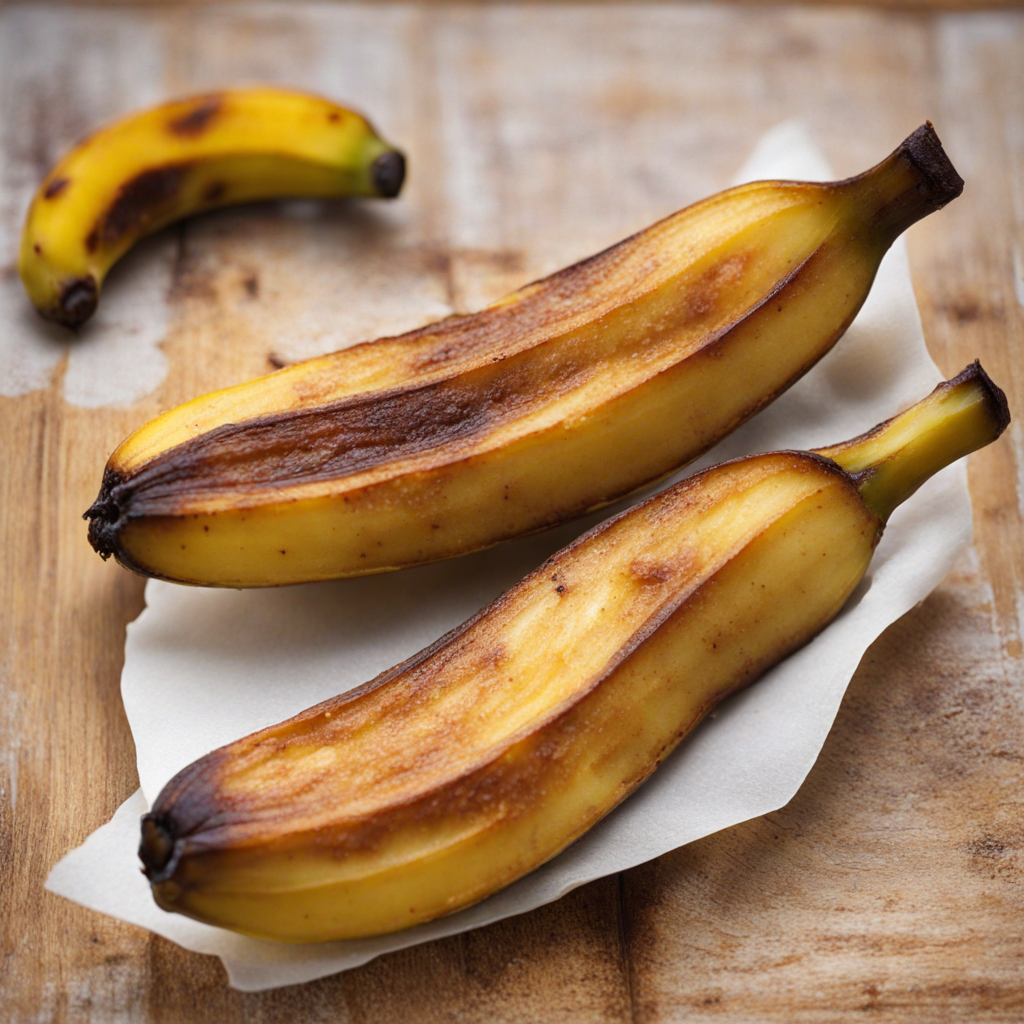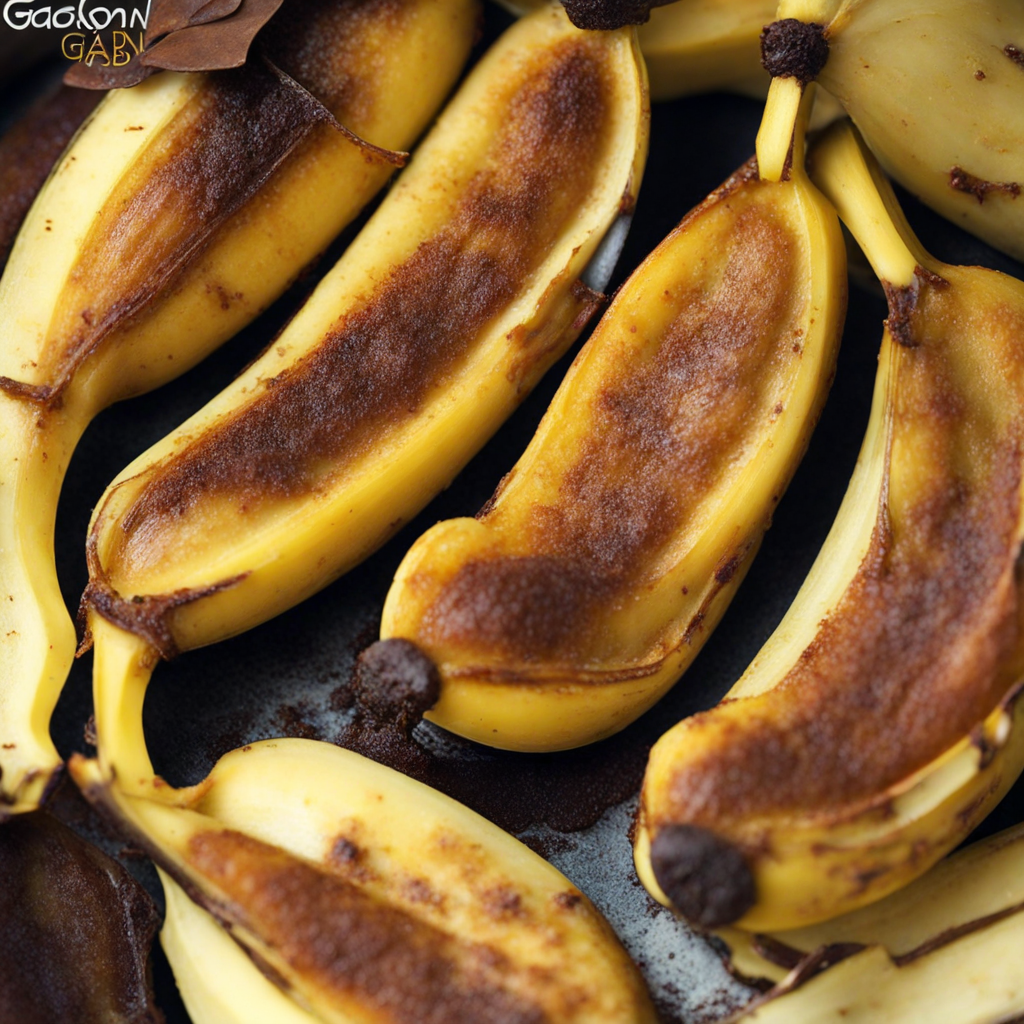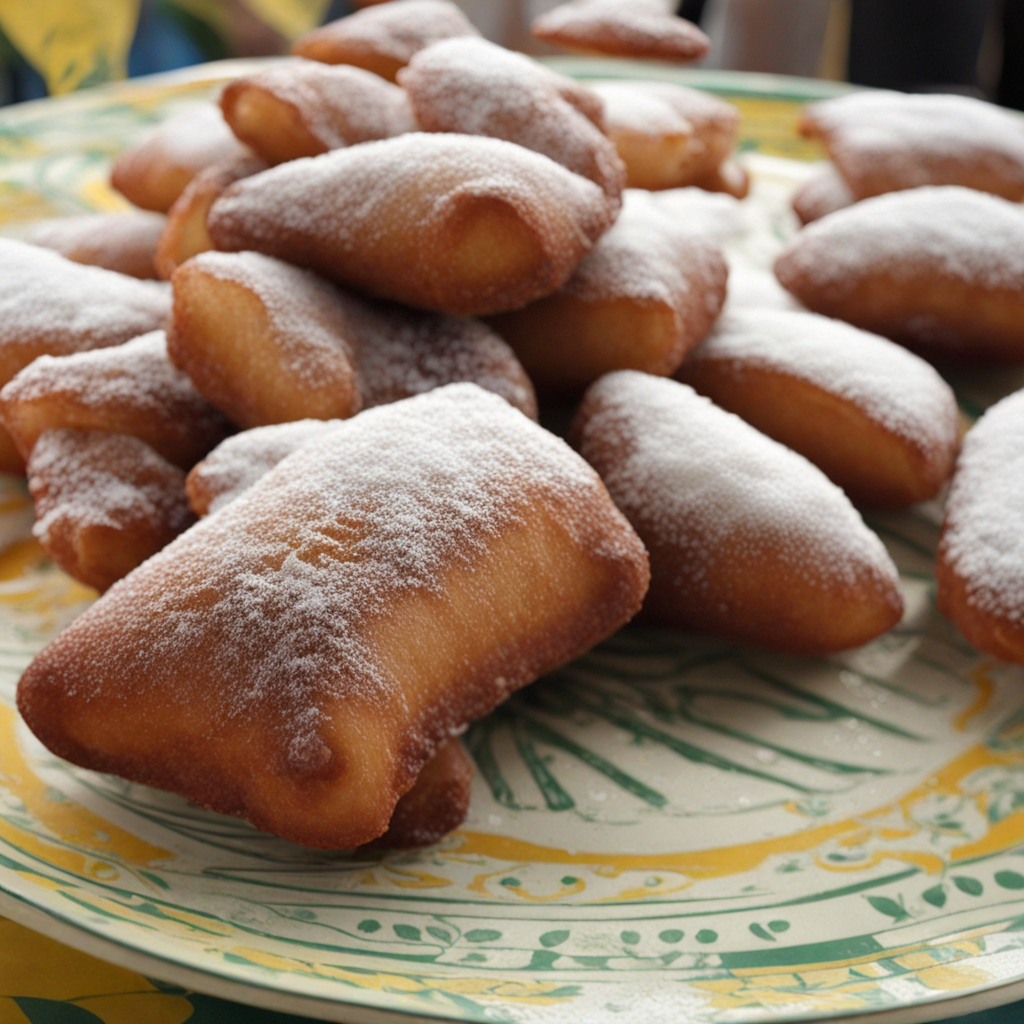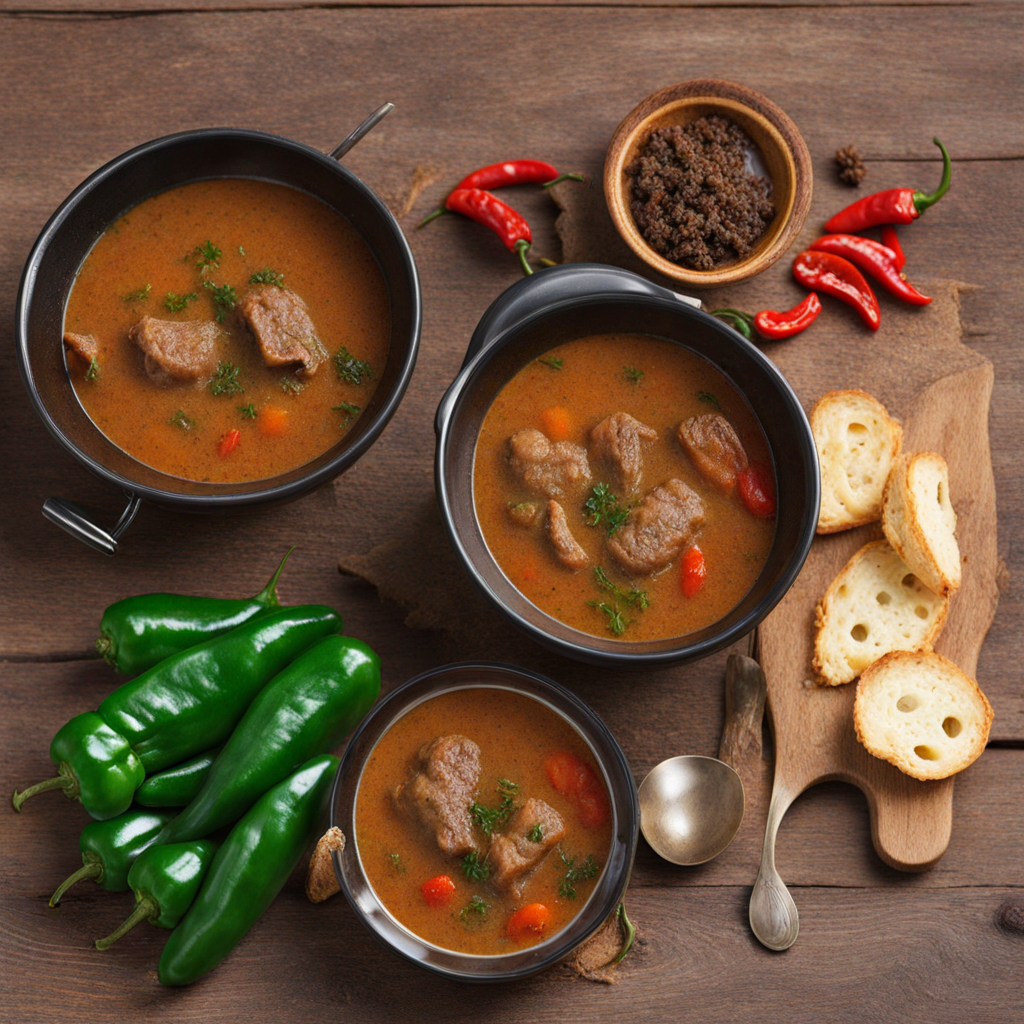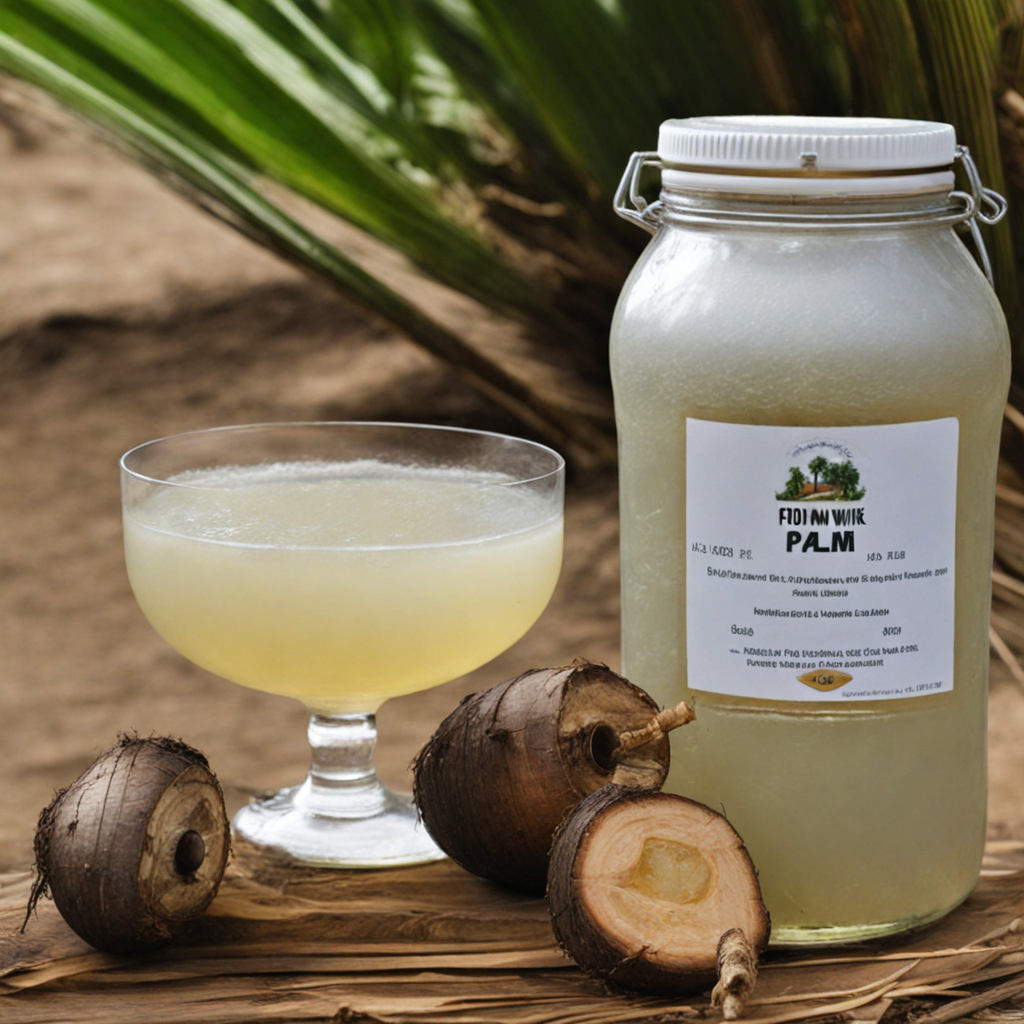Baked Bananas
Baked Bananas, a delightful dish from Gabon, showcases the country's vibrant culinary heritage. The bananas used are typically ripe and sweet, chosen for their natural sugars that caramelize beautifully during the baking process. The dish is often enhanced with a sprinkle of cinnamon or a drizzle of honey, which adds warmth and depth to the flavor profile. The combination of the soft, warm bananas with a slightly crisp exterior creates a comforting texture that invites you to indulge with every bite. In Gabon, Baked Bananas are not just a dessert; they are often enjoyed as a snack or a side dish, embodying the local philosophy of utilizing fresh and seasonal ingredients. The simplicity of the preparation allows the natural sweetness of the bananas to shine, but variations may include the addition of nuts or coconut for added crunch and flavor. Each bite offers a glimpse into the rich agricultural landscape of Gabon, where bananas are a staple crop and hold cultural significance. When served, Baked Bananas can be accompanied by a scoop of vanilla ice cream or a dollop of yogurt to create a delightful contrast between the warm and cold elements. This dish is perfect for both casual gatherings and festive occasions, as it invokes a sense of home and togetherness. Discovering Baked Bananas is like uncovering a hidden gem of Gabonese cuisine, offering a sweet and satisfying experience that lingers long after the last bite.
How It Became This Dish
The History of Bananes au Four: A Culinary Gem from Gabon #### Origin and Historical Context Bananes au Four, or baked bananas, is a delightful dish that hails from Gabon, a country nestled on the west coast of Central Africa. With its lush rainforests, abundant rivers, and a rich tapestry of cultures, Gabon's culinary landscape is as diverse as its people. The origins of Bananes au Four can be traced back to the indigenous communities that have inhabited the region for centuries. These communities relied heavily on the natural resources around them, and bananas, particularly plantains, were a staple in their diets. The banana plant, believed to have been domesticated in Southeast Asia, found its way to Africa through maritime trade routes, flourishing in the tropical climates. In Gabon, both the sweet bananas and the starchy plantains are cultivated, and they play an integral role in the local cuisine. Bananes au Four emerged as a practical and delicious way to prepare these versatile fruits, reflecting the resourcefulness of the Gabonese people. #### Cultural Significance In Gabonese culture, food is not merely sustenance; it is a vital part of social and family gatherings. Bananes au Four is often served during celebrations, communal meals, and family reunions, encapsulating the spirit of togetherness and hospitality that defines Gabonese society. The dish is often enjoyed as a side or a dessert, showcasing the adaptability of bananas in various culinary contexts. The preparation of Bananes au Four is a communal affair. Traditionally, families would gather to peel, slice, and arrange the bananas on a baking dish, sometimes adding a touch of sugar or honey for sweetness and sprinkling them with local spices. This process fosters a sense of community and strengthens familial bonds, as stories are shared and laughter fills the air. The dish is often accompanied by other traditional foods, such as grilled meats or fish, further enhancing its significance in the Gabonese culinary repertoire. #### Development Over Time As Gabon navigated the complexities of colonialism and globalization, its cuisine, including Bananes au Four, evolved. The introduction of new cooking techniques, ingredients, and cultural exchanges over the years have shaped the way this dish is prepared and enjoyed today. While the traditional recipe remains cherished, modern interpretations have emerged, often incorporating international flavors and cooking styles. In contemporary Gabon, Bananes au Four is commonly served in both homes and restaurants, reflecting its adaptability to modern dining experiences. Chefs may experiment with different toppings, such as coconut flakes, vanilla, or even a drizzle of chocolate, appealing to the palates of both locals and tourists. Moreover, the use of modern appliances has streamlined the cooking process, allowing for quicker preparation while still retaining the essence of the dish. The globalization of food culture has also led to the popularity of Bananes au Four beyond Gabon's borders. With the rise of social media and food blogging, the dish has garnered attention from food enthusiasts and travelers eager to explore authentic African cuisine. As a result, it has found its way into various culinary festivals, promoting Gabonese culture and food heritage on the international stage. #### Nutritional Value and Modern Adaptations Nutritionally, Bananes au Four is a wholesome dish. Bananas are rich in potassium, vitamins, and dietary fiber, making them a healthy choice for people of all ages. The baking process enhances their natural sweetness while preserving their nutritional benefits. In recent years, health-conscious adaptations have emerged, with some opting to reduce the amount of sugar or omit it altogether, focusing instead on the natural flavors of the bananas. Moreover, as the world becomes increasingly aware of dietary restrictions and preferences, variations of Bananes au Four have been created to cater to vegan, gluten-free, and low-sugar diets. These adaptations ensure that the dish remains relevant and accessible to a broader audience while still honoring its traditional roots. #### The Role of Bananes au Four in Gabon’s Culinary Identity Bananes au Four is more than just a dish; it is a symbol of Gabon’s rich culinary heritage and cultural identity. It embodies the principles of sustainability and resourcefulness, as it utilizes locally sourced ingredients and reflects the adaptability of Gabonese cuisine. The dish showcases the harmonious relationship between the land and the people, emphasizing the importance of maintaining culinary traditions while embracing modern influences. As Gabon continues to develop its tourism sector, Bananes au Four serves as a culinary ambassador, inviting visitors to experience the warmth and hospitality of Gabonese culture. Food tours and culinary experiences often highlight this dish, allowing travelers to partake in the communal preparation and enjoy it in a traditional setting. This not only promotes local gastronomy but also fosters cultural exchange and understanding. #### Conclusion In conclusion, Bananes au Four is a quintessential dish that encapsulates the history, culture, and evolution of Gabonese cuisine. Its origins lie in the resourceful practices of indigenous communities, and its cultural significance is woven into the fabric of Gabonese life. As the dish continues to evolve, it remains a beloved staple, symbolizing the resilience and adaptability of a people deeply connected to their culinary heritage. Through the lens of Bananes au Four, one can appreciate the rich culinary tapestry of Gabon, where tradition meets modernity, and every bite tells a story of culture, community, and the enduring love for food. Whether enjoyed during a festive occasion or a casual family meal, Bananes au Four is a testament to the flavors and traditions that make Gabon a unique and vibrant culinary destination.
You may like
Discover local flavors from Gabon


